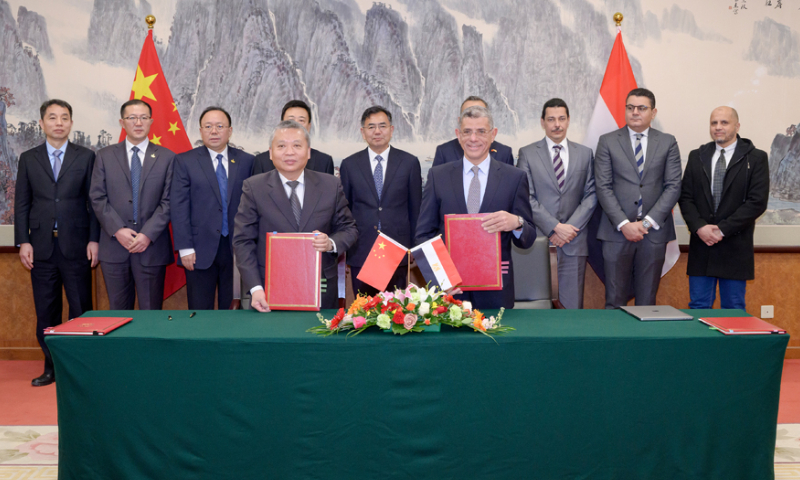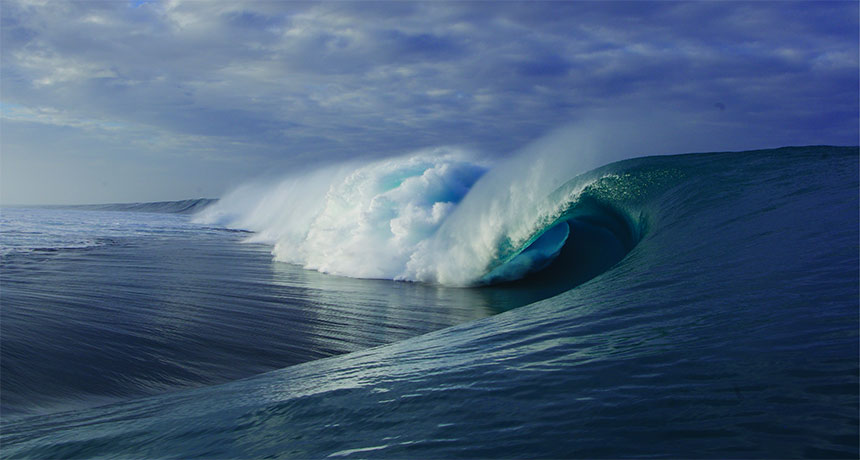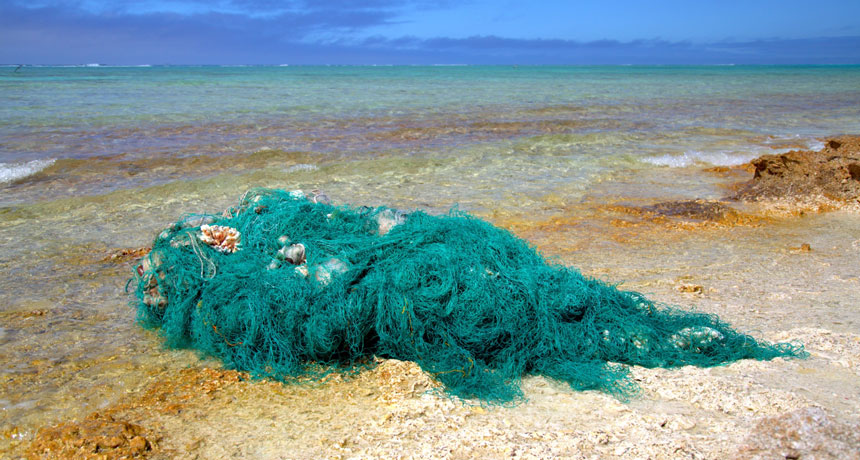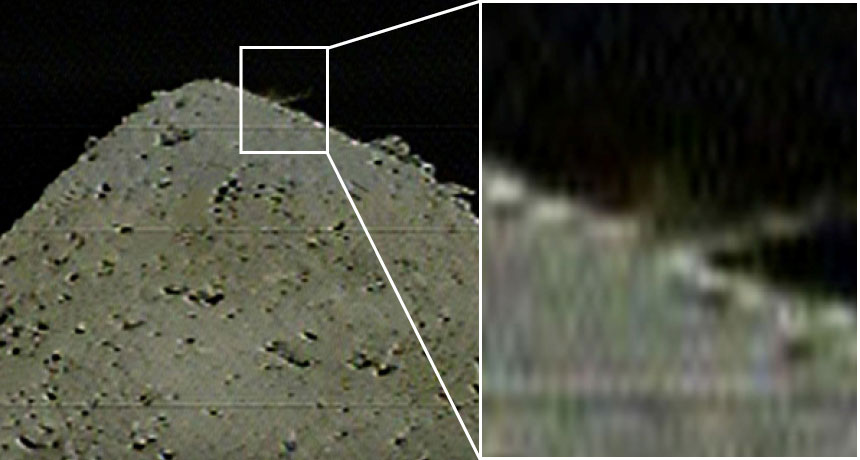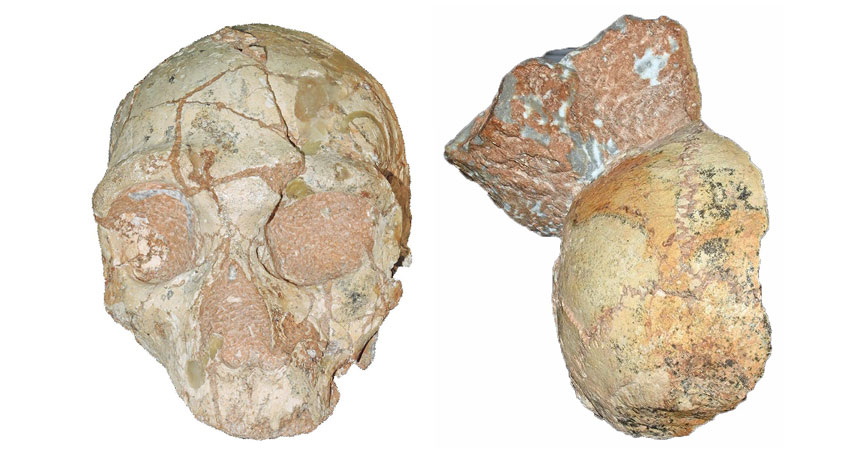China and France open a new chapter in joint exploration of nuclear energy after 40 years of partnership and trust
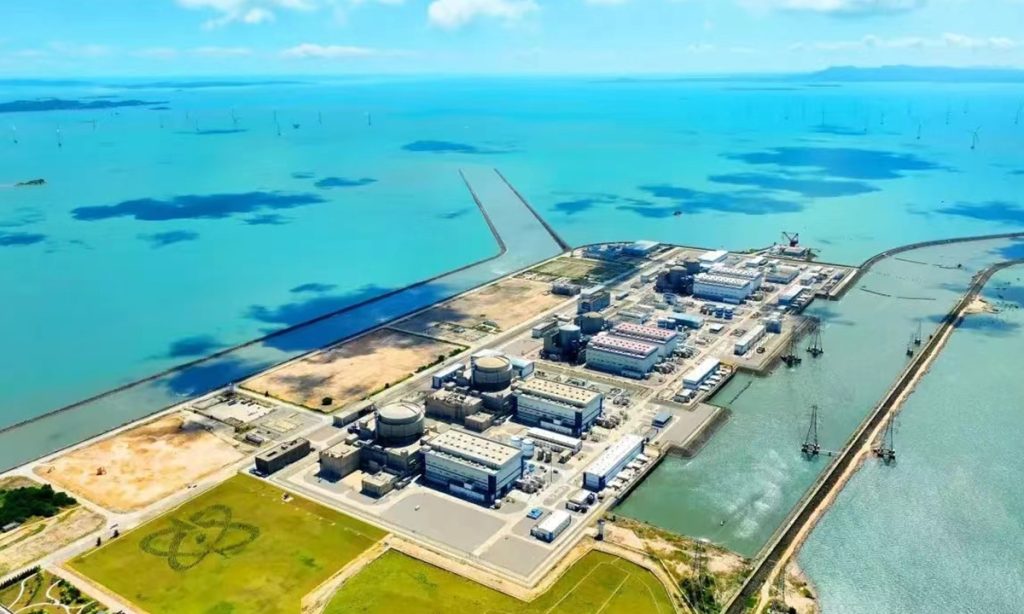
At the invitation of French President Emmanuel Macron, Chinese President Xi Jinping kicked off his state visit to France on May 5. It coincides with the 60th anniversary of the establishment of diplomatic ties between China and France, and is of great significance to building on past achievements and opening up new prospects for bilateral relations.
During this visit, achieving carbon neutrality goals will, once again, be an important consensus reaffirmed by China and France, in relation to which, the joint promotion of nuclear energy cooperation and development as an important cornerstone for the two countries to achieve carbon reduction goals has attracted great attention.
Yu Jianfeng, Chairman of China National Nuclear Corporation (CNNC), and Jean-Bernard Lévy, Chairman and Chief Executive Officer of Electricité de France (EDF) jointly released A Prospective Study on "Bluebook" on Nuclear Energy to Support for Low Carbon on Monday in Paris.
"China and France, as major nuclear energy-producing countries in the world, play an irreplaceable role in promoting nuclear energy to address climate change and low-carbon transformation," Yu said.
He noted that nuclear energy cooperation is an important part of the comprehensive strategic partnership between China and France. Under the strategic guidance of President Xi and President Macron, nuclear energy enterprises in the two countries have adhered to the principle of "walking on the two legs of technological cooperation and industrial cooperation," and have achieved fruitful results.
The Global Times learned from the CNNC that the cooperation between the CNNC and the EDF opens a new chapter in the two countries' nuclear energy cooperation. This not only reflects the concrete implementation of the important consensus reached by the top leaders of the two countries, but also marks the 40th anniversary of the two countries' nuclear energy cooperation and witnesses the 60th anniversary of the establishment of diplomatic relations between China and France.
The move will also support China in building an innovative nuclear energy international cooperation network. In the future, the two countries will leverage their strengths to build a new pattern of cooperation and development that is interconnected and driven by innovation, supported by industry to promote the improvement of global nuclear governance, and make greater contributions to the economic and social development of China and France, as well as the construction of a global community of shared future for mankind.
One of the most stable cooperation areas
The nuclear energy cooperation between China and France has a long history and continues to deepen. Since the signing of the first cooperation agreement on the peaceful use of nuclear energy in 1982, China and France have always adhered to the principle of equal emphasis on scientific and industrial cooperation. Nuclear energy cooperation has become one of the most stable cooperation areas between the two countries.
As one of the earliest international nuclear energy companies to cultivate business in China, the EDF has been operating in China for more than 40 years and has become one of the largest foreign investors in China's power generation and energy services industry.
For a long time, the EDF has developed and deepened its partnership with the CNNC. The two sides regularly hold high-level meetings, and their cooperation covers multiple areas such as nuclear power research and development, construction, operation and maintenance, and fuel, achieving numerous results.
The CNNC and the EDF have actively participated in the interactive activities of international organizations, sending experts to support the work of international organization technical groups, conducting international research projects, and promoting international coordination and standardization. For example, they participated in the International Atomic Energy Agency (IAEA)'s nuclear safety standards development work, especially the recent Nuclear Harmonization and Standardization Initiative (NHSI) small modular reactor regulatory forum activities initiated by the IAEA, which is aimed at promoting the development of universal standards for small modular reactors, coordinate unified regulatory requirements, and promote the safe and reliable deployment of small modular reactors worldwide.
The EDF and the CNNC have also made important contributions to the standardization work of international standardization organizations and the International Electrotechnical Commission.
As the main force of China and France's nuclear energy technology cooperation, the CNNC has established long-term friendly cooperation relationships with French partners and achieved fruitful cooperation results. In the more than 40 years of nuclear energy technology cooperation, the CNNC and the French Atomic Energy Commission have established seven collaborative laboratories in areas such as reactor thermal hydraulics, severe accident management, aging and life management of pressurized water reactors, fast reactors, nuclear fusion, geological disposal of high-level radioactive waste, decommissioning, and radioactive waste management. The two sides also signed and implemented over 500 special cooperation projects.
The CNNC has also successfully held six nuclear energy technology innovation seminars with the EDF, achieving good results in areas such as severe accidents, additive manufacturing, and material research.
Furthermore, the CNNC has also formed a consortium with Framatome to successfully bid for and implement the main machine installation project of the International Thermonuclear Experimental Reactor (ITER), and have conducted good cooperation with the Orano Group in areas such as the research on uranium resources.
To jointly build "artificial sun"
Cooperation in the peaceful use of nuclear energy has become an important part of the comprehensive strategic partnership between China and France. The scope of nuclear energy cooperation between the two countries is wide-ranging and diverse, but the most "high-energy" project undoubtedly is the ITER large-scale scientific project that the two countries are jointly working on.
Referred to as the world's largest "artificial sun," the ITER project is currently the largest and most influential international scientific project in the world, carrying the hopes of humanity for the peaceful use of nuclear fusion energy.
The ITER device is a superconducting tokamak capable of producing large-scale nuclear fusion reactions, which will help humanity move further toward a continuous source of clean energy. Since its establishment in 2007, the ITER has been one of the largest international scientific engineering cooperation projects in the world. France is the location of the ITER project construction and headquarters, while China is one of the seven equal member parties of the ITER project, contributing 9.09 percent of the construction phase and 10 percent of the operation and decommissioning phase funding.
China joined the ITER project in 2006. Since the implementation of the project, China has always adhered to its international commitments, with Chinese enterprises and researchers bravely shouldering heavy responsibilities and working together with international counterparts to contribute Chinese wisdom and strength to the smooth progress of the project.
The CNNC has been actively involved in the development of the world's largest "artificial sun." In September 2019, a China-France consortium led by the CNNC signed the TAC-1 installation contract with the ITER, marking China's deep involvement in the installation of the core equipment of the tokamak device - the "heart" of the experimental reactor.
On February 29, 2024, the ITER organization signed a new the vacuum chamber module assembly contract with the consortium. China will once again undertake the installation of the core equipment, contributing wisdom and strength to the ITER project alongside France.
Shen Yanfeng, General Manager of the CNNC, said that the signing of the agreement means that the China-France consortium led by the CNNC has become the sole contractor for the main host installation of the ITER project. This demonstrates the CNNC's commitment to implementing President Xi's important instructions, opening up to the outside world, deeply participating in the global nuclear industry chain cooperation, building a new development pattern, promoting high-quality development of the nuclear industry, accelerating the advancement of China's modernization, and striving to create a vivid practice of a global community of shared future for mankind.
This will greatly enhance China's participation and contribution in international large-scale scientific projects, and help implement the "three-step" development strategy of nuclear energy - thermal reactors, fast reactors, and fusion reactors, Shen said.
Direction for nuclear energy development
The release of the "bluebook" undoubtedly takes the cooperation between China and France in the nuclear energy field to a new level.
The Global Times learned that the "bluebook" is the first strategic planning soft science cooperation between Chinese state-owned nuclear energy enterprises and partners in developed Western countries in recent years, marking a significant increase in China's nuclear industry strategic planning and soft science research capabilities and international influence, with obvious uniqueness and importance.
"The 'bluebook' is cooperation between China and France at the strategic research level in the field of nuclear energy, which has never happened before. It was included in the plan during French President Macron's visit to China in 2023," Luo Qingping, President of the China Institute of Nuclear Industry Strategy under CNNC, told the Global Times.
The release of the "bluebook" at the historical moment of the 60th anniversary of the establishment of diplomatic relations between China and France can also be seen as the opening of a new chapter in the nuclear energy cooperation of the two countries. In the future, China and France can combine the contents of the "bluebook" to deepen cooperation in promoting nuclear energy development, including cooperation in exploring third-party markets.
The Global Times found that the "bluebook" interprets the development ideas and practices of China and France in the field of nuclear energy through historical reviews and strategic research, providing an in-depth analysis of the future nuclear energy industry from a macro perspective.
The research mainly covers the current global status and trends of nuclear energy development, the role of nuclear power in addressing the climate change, progress in nuclear power safety and related technology standards, and measures to enhance the economic efficiency of nuclear power coupled with other new energy sources, systematically describing the current status of nuclear energy development and good practices in China and France.
In addition, the "bluebook" fully demonstrates China's strength in nuclear power construction, including its strength in third-generation nuclear power, fourth-generation nuclear power, small modular reactors, and the entire industry chain service capabilities.
It also describes important nuclear power products in China, such as the Hualong One, Linglong One, high-temperature reactors, and fast reactors, making it easier for the international community to understand China's nuclear power technology and product capabilities.
The release of the "bluebook" can expand the influence of Chinese nuclear power companies, especially the CNNC. Through the preparation of the "bluebook," China and France can reach a consensus on nuclear energy technology at the strategic level and enhance the international influence of nuclear energy technology in both countries.
The "bluebook" proposes three initiatives. First, China and France jointly advocate that every country in the world has the right to develop nuclear power, but safety must be the top priority in the development process, meaning that nuclear power must be developed under reliable safety supervision. Second, it points out to the world that nuclear energy can effectively support low-carbon development. China's future nuclear energy technologies such as small modular reactors and nuclear fusion are important solutions to the global energy problem. Third, it calls for urgent action to address the crisis caused by climate change, emphasizing that energy transformation is imperative, and the development of nuclear power is undoubtedly an effective approach.
Based on this "bluebook," there is a possibility of creating an internationally significant guiding document. The IAEA is also very interested in this "bluebook." Next, the CNNC will communicate with the IAEA to try to include the "bluebook" in their publication list for global promotion.
A green future for humanity
According to data in the "bluebook," as of the end of December 2023, France has an installed nuclear power capacity of 61.37 gigawatts in operation, ranking second in the world, with an additional 1.63 gigawatts under construction. China has an installed nuclear power capacity of 53.15 gigawatts in operation, ranking third in the world, with an additional 23.72 gigawatts under construction. Both China and France are major nuclear energy-producing countries, with CNNC and EDF as key players in global nuclear energy development, each having their own advantages in nuclear power construction, operation, maintenance, and fuel supply, accumulating rich experience in the development of nuclear energy.
The continued cooperation between the two countries will provide strong momentum for the utilization and development of global clean energy technologies. China and France will continue to deepen cooperation in multiple areas such as nuclear engineering, nuclear power operation, and nuclear fuel cycle. They will promote the synergy between nuclear energy and renewable energy, formulate public policies focusing on low-carbon growth, accelerate the development of renewable energy such as hydropower, wind power, solar power, and geothermal energy, extend the lifespan of existing nuclear power plants, initiate new nuclear power construction projects, and optimize the cost of energy transition.
Furthermore, the two sides will cooperate to promote advanced nuclear energy technologies such as small modular reactors and fusion reactors. They will work together to advance the commercial deployment of small modular reactors. They will also strengthen international cooperation in the field of nuclear fusion research, the Global Times learned from the CNNC.
At the same time, they will promote the comprehensive application of nuclear energy, popularize technologies such as nuclear heating, seawater desalination, and hydrogen production, diversify the forms of nuclear energy utilization, and reduce greenhouse gas emissions.
They will also conduct research on the impact of climate change using nuclear technology, playing a special role in addressing issues such as water scarcity, soil erosion, land degradation, and increased diseases and pests in plants and animals caused by climate change.
Looking to the future, the CNNC and the EDF have reached a consensus that nuclear energy development is a realistic and important choice in the transition to a clean, low-carbon, safe, and efficient modern energy system, especially as nuclear energy expands from electricity generation to heating, steam supply, hydrogen production, and other applications, potentially accelerating the decarbonization of high-emission industries. The deepening cooperation in the nuclear energy field between China and France will undoubtedly bring more solutions and surprises to humanity.
